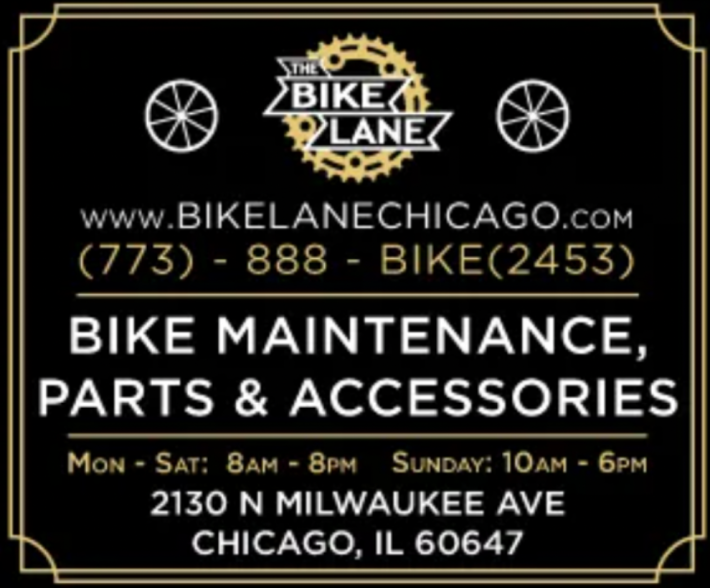
On Tuesday as an election was coming to a close, which failed to pass a referendum to fund services for unhoused Chicagoans by raising a tax on $1 million-plus real estate deals, a conversation about overdose deaths on the CTA began. Chi Hack Night, a weekly gathering of civic-minded coders, hosted a presentation by longtime Chicago Reader features writer Katie Prout about this growing public health crisis, and how the problem is larger than previously thought.
Prout has recently covered issues like violence prevention, homelessness, and addiction on the transit system for the Reader, compassionately telling the personal stories of our city’s most vulnerable residents. She gave her talk, entitled "Every life counts: Tracking opioid overdose deaths on the CTA," via livestream to about 30 in-person attendees and more online.
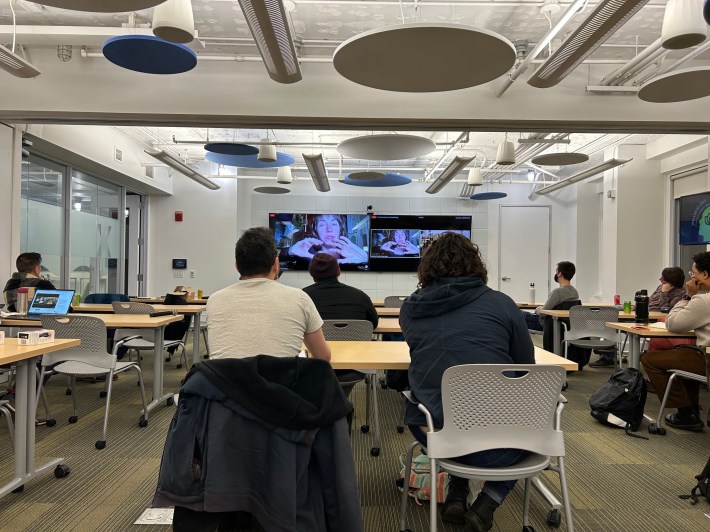
Chi Hack Night takes place at a sleek co-working facility on the 12th floor of the Lyric Opera Building, 20 N. Wacker Dr. Two dozen boxes of Narcan, the nasal spray form of naloxone, a medication used to reverse opioid overdoses, were arranged on a table at the entrance of the conference room where the session took place. The event opened with a two-minute meet-your-neighbor conversation followed by announcements.
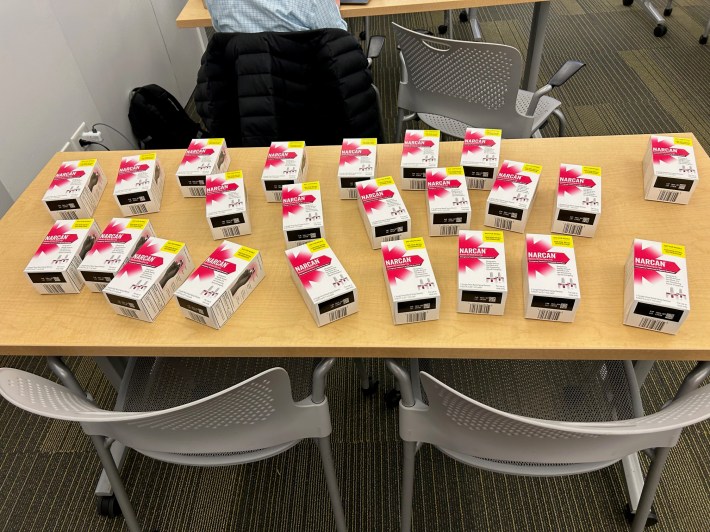
Prout then gave a half-hour talk on her work covering addiction, a personal topic for the writer, who has family members and friends struggling with substance abuse disorders. Her presentation included a primer on how to recognize whether a person might be overdosing, and how to administer Narcan. Prout foregrounded her findings by defining the difference between opiates (naturally occurring opioids like heroine and morphine) and opioids (opiates plus synthetic drugs like fentanyl). She also debunked stereotypes about who uses opioids and why.
Prout mentioned that 2,000 people died of opioid overdoses in Cook County in 2022. 1,825 of these deaths were from fentanyl.
Prout added that this number is likely lower than reality. A 2022 University of Illinois at Chicago study found that up to 15 percent of opioid deaths are undercounted at hospitals. Overdose deaths are often mistakenly attributed to old age, an existing condition, cold exposure, or other "co-morbidities." In a news release, associate professor Lee Friedman, who led the study, stated that some people who die of opioid overdose are miscounted because "They don't fit the profile, the stereotype – the stigma – of someone with an opioid use disorder."
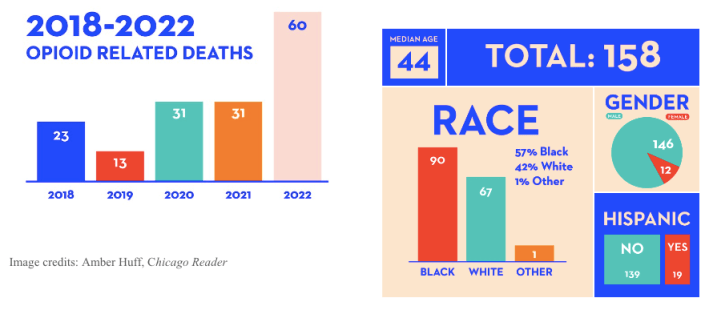
Pulling data from Cook County medical examiner’s office, Chicago Police Department, and Chicago Office of Emergency Management reports, Prout estimated that 6 to 10 percent of Cook County opioid overdose deaths between 2018 and 2022 took place on the CTA. The rise in fatalities on public transportation during that five-year period is staggering: from 23 in 2018 to 60 in 2022. Of these deaths, the vast majority took place on the 24-hour Blue Line.

"Why track deaths on the CTA?" Prout asked rhetorically at the Chi Hack Night talk. "This is the kind of information you need in order to figure out where to put Narcan vending machines, where to put harm reduction supplies."
Prout said the response from the CTA to her reporting has been "back and forth." Last November CTA Chief of Equity and Engagement Denise W. Barreto took a train ride with Prout to learn more about overdoses. In response the City of Chicago installed a vending machine at the 95th/Dan Ryan Red Line station that provides free Narcan, hygiene products, and drug-testing strips. Prout told Chi Hack Night the CTA is putting together task forces to distribute Narcan and harm reduction supplies on trains.
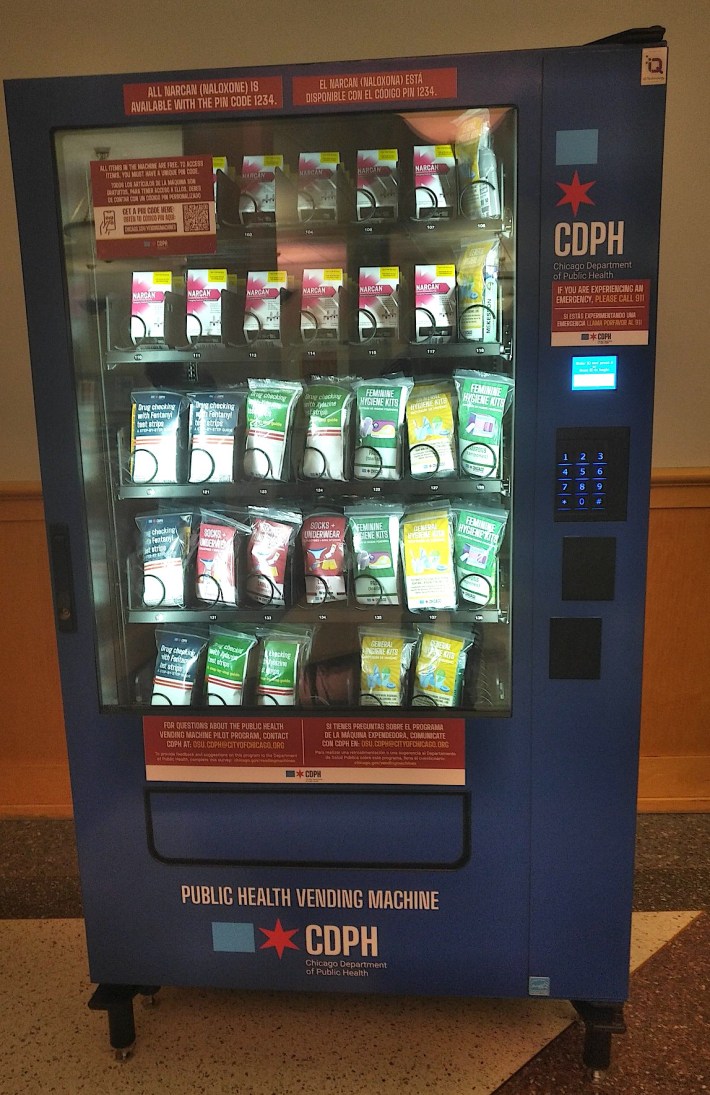
However, Prout said it remains unclear whether CTA workers are allowed to carry and administer Narcan. Illinois state law enables non-medical personnel to administer naloxone to prevent an overdose, and the drug cannot be abused or produce a high. However, she said CTA workers have told her, "I’m not allowed to use that." Clearly, a detailed overdose response plan and training is needed across the CTA, including public awareness campaigns so bystanders know how to intervene quickly and safely.
Narcan is now available at 27 Chicago Public Library branches, locations where Prout said people might use opioids because they're safe places with privacy. The Chicago Department of Public Health will conduct a study on the impact of Narcan vending machines since they began installing them in 2022.
Watch the full presentation here.
One of the hosts of Chi Hack Night said she reached out to the CDPH about the event, and they sent the 24 boxes of Narcan for free. I put one in my bag as I headed out, down the elevator and towards the Blue Line for my journey home.
To learn more about how to prevent and respond to an overdose, visit the Chicago Recovery Alliance.

Did you appreciate this post? Please consider making a tax-deductible donation to help Streetsblog Chicago keep publishing through 2025. Thank you.





